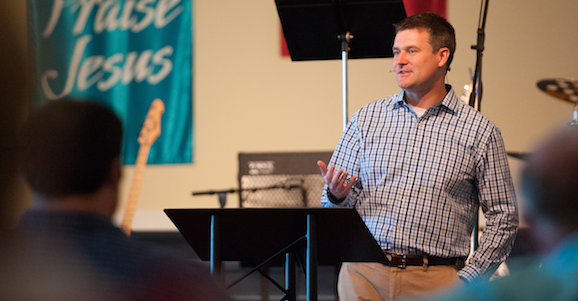Summary of John's Gospel
July 28, 2014 at 09:17 AM
Summary of John’s GospelYesterday I finished preaching through the Gospel of John at New Song Fellowship. We spent seven and a half months on the gospel and I wanted to wrap up with a summary of what we had seen in John's gospel over that time. Here's the summary I wrote and read as a part of yesterday's message.
by Brent Hobbs
In chapter 1, Jesus is the Word, who was with God and was God, the light of the world, who darkness could not overcome. The Word became flesh and made his dwelling among us.
In chapter 2, Jesus changes water into wine — a sign that his kingdom is not about dead ceremonial washings, but a living, joyful celebration of God’s kingdom. Then he clears the temple courts and claims to be, himself, the greater temple – God’s very presence on earth.
In chapter 3, Jesus talks with Nicodemus, telling him he must be born again to see God’s kingdom, and we learn that God loved the world by sending his only Son, so that all those believing in him would not perish, but have eternal life.
In chapter 4, Jesus meets a Samaritan woman at the well and proves he’s the promised Messiah. The woman and many Samaritans in her village believe because of the words Jesus speaks to them.
In chapter 5, Jesus shows he has the power to heal and possesses the very authority of the Father.
In chapter 6, Jesus feeds the 5,000 and walks across the lake, but many desert him when he claims that he himself is the bread of life, greater than the manna God gave through Moses.
In chapter 7, Jesus goes to Jerusalem for the Feast of Tabernacles and uses the water and lantern ceremonies as object lessons. He teaches that he, himself, is the true fountain of living water and the light of the world.
In chapter 8, Jesus lets us know that all of us who sin are slaves to sin, but that there’s hope for us and true freedom can be found— because if the Son sets us free, we are free indeed.
In chapter 9, Jesus heals a man who had been blind his whole life, and offers to give sight to the physically seeing but spiritually blind Pharisees.
In chapter 10, Jesus is the good shepherd who lays down his life for his sheep. He’s come so that they might have life, and have it in full abundance.
In chapter 11, Jesus waits for his friend to die, then arrives at his funeral to call him out of his grave. The Pharisees and chief priests decide that since Lazarus lives, Jesus must die.
In chapter 12, Jesus arrives in Jerusalem on a donkey, to a king’s welcome. But he knows that the path to his throne leads also to a brutal cross.
In chapter 13, Jesus takes his disciples to the upper room. He washes their feet and serves them as if he were their slave, to give an example that we all should follow.
In chapter 14, after predicting Judas’ betrayal, Peter’s denial, and his own death, Jesus tell his disciples, “Do not let your hearts be troubled” because he is the way to the Father, the truth, and the life – and because he is sending the Holy Spirit to be their advocate.
In chapter 15, Jesus is the vine and we are the branches. We must remain in him.
In chapter 16, Jesus tells the disciple there will be weeping for a night, but afterward their weeping would turn to joy.
In chapter 17, just before his arrest & trial, Jesus prays for his disciples and for us: that we would live lives of unity and love.
When chapter 18 arrives, Jesus turns himself over to the Jewish leaders and Roman soldiers, because he came to earth to be lifted up and reveal the Father to the world.
In chapter 19, Pilate condemns an innocent man to die. Jesus is beaten, whipped, and nailed to a cross. The King of the Jews humiliated and tortured, fulfilling God’s perfectly designed plan, down to the lots cast for his clothing. Jesus bows his head and gives up his spirit with the cry, “It is finished!”
Jesus’ lifeless body is laid in a tomb and it seems like darkness reigns.
But the sun dawns on Sunday morning, and chapter 20 tells us about an empty tomb, a savior who comforts us by name, and Jesus appearing to his disciples. The light of the world lives! And Thomas proclaims, “My Lord, and My God!”
In chapter 21, the story is nearly over, but Jesus appears again. He continues to reveal his character and grace as he cooks breakfast for his disciples and forgives the one who denied him.
When the Word was made flesh, light invaded the darkness, and the darkness could not hold back God’s mission – what he meant to accomplish in Christ. And now what’s left is for you to believe this good news: Jesus reigns.
blog comments powered by Disqus


